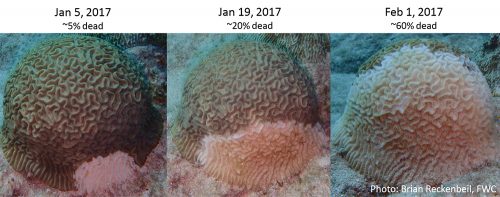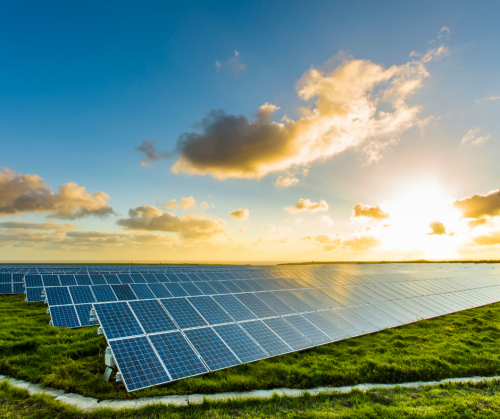To pair with the rest of our educational content in each Earth to Florida newsletter, we bring you monthly updates on statewide environmental news. Read on below to see what we found for the month of July:
 Florida legislators have enacted a bill called the Florida Wildlife Corridor Act that secures $400 million to protect the state’s wide variety of natural areas. The act is intended to safeguard clean water and air, protect agricultural lands from development and allow for continued recreational access to natural areas. Through this legislation, the Florida Wildlife Corridor is now formally recognized as an interconnected web of natural areas throughout the state, including forests, swamps, fields, pastures, timberlands and even the edges of suburbs.
Florida legislators have enacted a bill called the Florida Wildlife Corridor Act that secures $400 million to protect the state’s wide variety of natural areas. The act is intended to safeguard clean water and air, protect agricultural lands from development and allow for continued recreational access to natural areas. Through this legislation, the Florida Wildlife Corridor is now formally recognized as an interconnected web of natural areas throughout the state, including forests, swamps, fields, pastures, timberlands and even the edges of suburbs.- The U.S. Army Corps of Engineers has announced a new management plan for Lake Okeechobee that will reduce freshwater discharges sent to the state’s east coast while increasing water sent to the west and to the south. As a part of the plan, they are considering changing the status of the 20-mile Lake Worth Lagoon to an estuary. Previously, the lagoon was part of Lake Worth’s flood control system, acting as a drain for Lake Okeechobee. The new plan will reduce freshwater discharges to the lagoon by two-thirds.
- For the past two years, University of Florida scientists have been researching the viability of introducing hemp as a crop in Florida. One potential roadblock to hemp’s success: troublesome, worm-like pests called nematodes. Studies suggest that hemp serves as a good host for the nematodes, which can result in the crop becoming damaged. The university is continuing to research cultivars that resist the pests and working to develop agents that would reduce them.

Stony coral tissue loss disease progresses rapidly once stony corals are infected. This coral lost 60 percent of its living tissue over the course of roughly a month. Photos: Brian Reckenbeil/Florida Fish and Wildlife Conservation Commission - Stony coral tissue loss disease — an infectious waterborne disease that affects more than 20 of Florida’s coral species — was first spotted in the state in 2014. It has since spread across Florida’s reef tract and beyond. To help combat the disease, researchers collected fragments from healthy corals and grew them in laboratories. And now, they’re putting them to use: In May, scientists planted more than 1,100 colonies over two days at 24 sites throughout Marion County. Researchers are currently monitoring these locations to see if the planted coral can survive the disease.
- Per-and poly-fluoroalkyl substances, more commonly known as PFAS, are linked to many cancers and other health problems. Their use has been phased out of consumer and industrial products over the years – yet they keep showing up, sometimes in extreme amounts, throughout Florida environments. University of Florida researchers are completing a three-year study based in Brevard County about how these chemicals are possibly transferred through groundwater, surface water and soil. And they recently shared a preview of their preliminary findings: They identified 15 types of PFAS that showed up in 75% of their water and soil samples from the area so far. They’re hoping to publish more data by the end of the summer, they say.
- Harmful algal blooms, particularly red tide, continue to plague Florida waterways. Some environmental organizations are calling on Gov. Ron DeSantis to declare a red tide emergency, while others are protesting and calling for immediate measures to address the issue. So far this summer, Pinellas County has spent more than $1 million to clean up 1,277 tons of dead marine life and debris caused by the bloom.
- On Florida’s east coast, scores of colorful reef fish littered Palm Beach’s sands in a massive fish kill. Florida Fish and Wildlife Conservation Commission officials concluded that cold-water upwellings were probably the culprits for this massive loss of life: Divers and anglers had reported cooler waters around the reef, which could be fatal for tropical fish. However, officials and beachgoers aren’t counting out the possibility that Sargassum blooms – mats of algae that had been reported along the shore – could’ve decomposed and choked these marine ecosystems of oxygen.
- More intense storms and rising sea levels caused by climate change are causing researchers to turn a more watchful eye toward Superfund sites. Superfund sites are those areas that the U.S. Environmental Protection Agency has deemed polluted and in need of long-term cleanup. Scientists are investigating how floods could spread contamination from these areas to nearby neighborhoods. In Florida, there are three at-risk sites of flooding: Trans Circuits, Inc. in Lake Park, Solitron Microwave in Port Salerno, and Piper Aircraft in Vero Beach.
- To protect vulnerable communities from sea level rise and storm surge, the U.S. Army Corps of Engineers has proposed a $6 million, 20-feet-high seawall that would stretch 6 miles along the coast of Miami. The plan is scheduled to be released this fall.
- At the end of June, Gov. Ron DeSantis signed a new piece of legislation that opponents see as a setback for clean energy goals in Florida. Although several major cities in the state have set 100% renewable energy targets, this new law prevents cities from banning fossil fuels. Proponents of the legislation say it encourages consumer “energy choice” in Florida, while opponents say consumers have already given input by electing their local government officials. In Miami, the city had intended to ban natural gas in any new construction – but the new bill blocks them from developing green building codes that exclude natural gas connections.
 A recent report from the Southern Alliance for Clean Energy (SACE) has dubbed Florida the new “solar leader” of the Southeast. Despite negative impacts from the coronavirus pandemic on distributed solar adoption (solar energy produced at or near the point where it is used, like rooftop solar), a sizable portion of the distributed solar added across the Southeast in 2020 was built in Florida. Utility-scale solar (or large-scale solar energy generation that often goes directly into the grid), had a record year — increasing in Florida and nationwide.
A recent report from the Southern Alliance for Clean Energy (SACE) has dubbed Florida the new “solar leader” of the Southeast. Despite negative impacts from the coronavirus pandemic on distributed solar adoption (solar energy produced at or near the point where it is used, like rooftop solar), a sizable portion of the distributed solar added across the Southeast in 2020 was built in Florida. Utility-scale solar (or large-scale solar energy generation that often goes directly into the grid), had a record year — increasing in Florida and nationwide.
- Gov. Ron DeSantis and the Florida Cabinet rejected a legal ruling that would have halted the extension of Kendall Parkway in Miami, which was proposed to run through the Bird Drive Basin wetlands that fringe on the Everglades. According to opponents of the extension, the highway would destroy wetlands that help replenish Miami-Dade county’s underground drinking water supply. The highway would also disrupt the only Everglades Restoration project designed to help restore the ailing Biscayne Bay. Despite the new decision, it is still possible that the Kendall Parkway extension will not move forward. County officials and other proponents of the highway believe that it is necessary to ease traffic jams, but in 2019, a county expert testified that it would only shorten commutes by 6 minutes.
- The U.S. Fish and Wildlife Service is revamping regulations in the Endangered Species Act, potentially giving the 2,700 species under the act stronger protections, including 134 species in Florida. They’re planning to revisit five key regulations in the Endangered Species Act, overturning changes made by the previous administration that narrowed the scope of the law. The current administration plans on reversing a rule that allows for consideration of economic factors when deciding whether to protect habitats; it wants to restore the precedent that these decisions be solely based on science.
 The Conservancy of Southwest Florida released a five-year study that is the first to quantify the movements and preferred habitats of the invasive Burmese python in Southwest Florida. The Conservancy’s Burmese Python Research and Removal program has captured and removed over 20,000 pounds of pythons, helping to protect Florida’s native wildlife from this invasive species. Findings from this study can be used by natural resource managers to design improved python control strategies going forward.
The Conservancy of Southwest Florida released a five-year study that is the first to quantify the movements and preferred habitats of the invasive Burmese python in Southwest Florida. The Conservancy’s Burmese Python Research and Removal program has captured and removed over 20,000 pounds of pythons, helping to protect Florida’s native wildlife from this invasive species. Findings from this study can be used by natural resource managers to design improved python control strategies going forward.